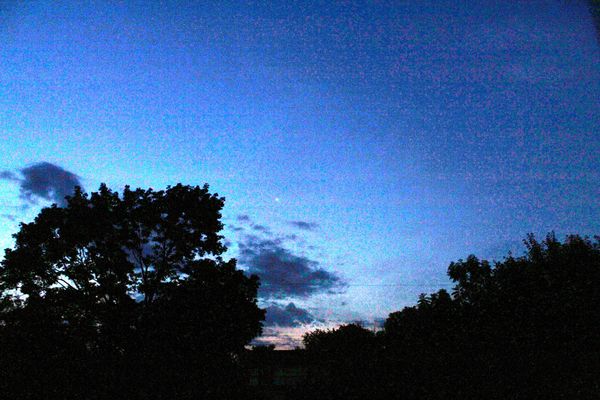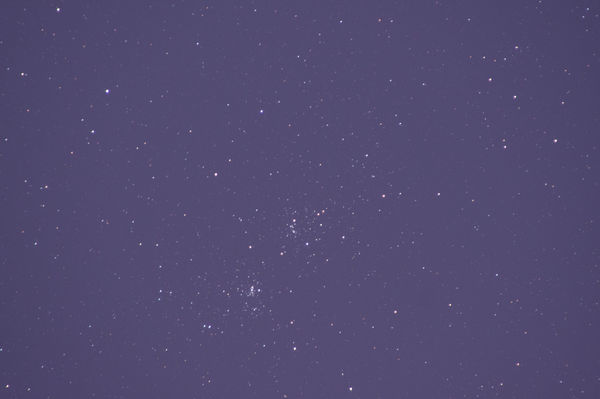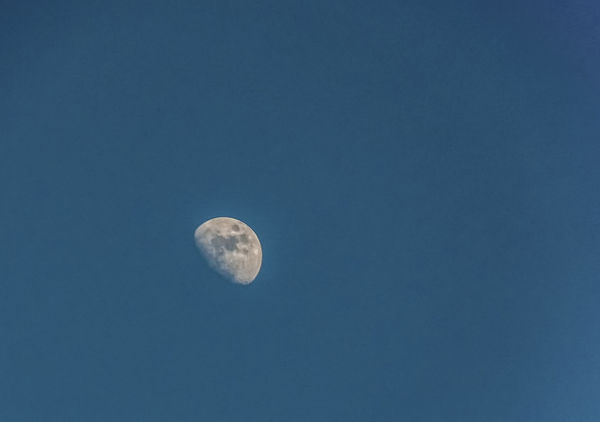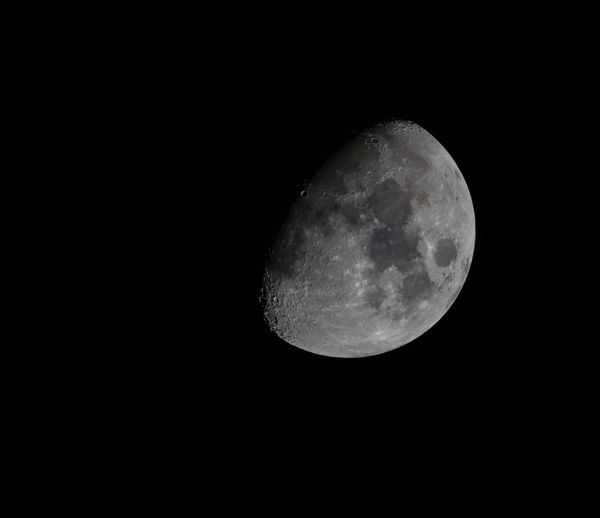Venus pre-dawn
Jul 2, 2017 15:53:34 #
KenY
Loc: Glenside, Pa
I tried many variations of shutter speed and ISO, as well as trying manual and auto-focus. This was taken on 6/30/17 at about 4AM with an 18-55mm lens on Canon T6, auto-focus.
The shot was taken at 18mm, 1/30, f/5.6, ISO at 1600. The only post-processing I used was AutoCorrect in Microsoft Office Picture Manager.
I would appreciate tips on how to get a clearer shot with less graininess.
The shot was taken at 18mm, 1/30, f/5.6, ISO at 1600. The only post-processing I used was AutoCorrect in Microsoft Office Picture Manager.
I would appreciate tips on how to get a clearer shot with less graininess.

Jul 2, 2017 15:58:07 #
It's an attractive picture, night sky photography is a blast.
It looks like you have a lot of light pollution where this was taken, if you can find darker skies or catch Venus higher in the sky you might be able to lower yout iso and get a less noisy picture while maintaining contrast.
Also f5.6 is a little slow for night skies try to get to f2.8 or faster.
Edit: also try 20 second or so shutter speed on a tripod. (Delayed release)
It looks like you have a lot of light pollution where this was taken, if you can find darker skies or catch Venus higher in the sky you might be able to lower yout iso and get a less noisy picture while maintaining contrast.
Also f5.6 is a little slow for night skies try to get to f2.8 or faster.
Edit: also try 20 second or so shutter speed on a tripod. (Delayed release)
Jul 2, 2017 23:05:10 #
BassmanBruce wrote:
It's an attractive picture, night sky photography is a blast.
It looks like you have a lot of light pollution where this was taken, if you can find darker skies or catch Venus higher in the sky you might be able to lower yout iso and get a less noisy picture while maintaining contrast.
Also f5.6 is a little slow for night skies try to get to f2.8 or faster.
Edit: also try 20 second or so shutter speed on a tripod. (Delayed release)
It looks like you have a lot of light pollution where this was taken, if you can find darker skies or catch Venus higher in the sky you might be able to lower yout iso and get a less noisy picture while maintaining contrast.
Also f5.6 is a little slow for night skies try to get to f2.8 or faster.
Edit: also try 20 second or so shutter speed on a tripod. (Delayed release)
The f5.6 should have no effect on the graininess. I have shot at many f-stop values and it just doesn't matter. It will effect how much light is captured, but not the graininess.
I went thru my images looking for one with a not completely dark sky and found this of NGC884 and NGC869, a double open cluster. It is using a Sony A55 that has been moddied to be a full spectrum IR camera and I placed on it a Tokina 300mm f2.8 but set it at f4 and added a 1.4x TC which pushed it to f5.6. Shot at ISO 800 and it was a 15 sec shot while mounted piggy back on a larger scope. The colors are a bit strange since it picks up IR too. But there is no real sign of graininess. You can see some distortion in the stars if you look closely. Not my best choice for doing stars.
I wonder if processing in Microsoft Office Picture Manager has something to do with it. I am not familiar with this application and wonder if it is not up to the task.
************************************ Adding another sample ****************************
Decided to add another example. The first moon picture is taken before it got too dark. The 2nd picture is taken 1 1.2 hr later and pushed a bit and cropped to better show off the moon. Taken with a Sony A6300 and the SEL18-200 lens and taken at 200mm.
Jul 2, 2017 23:47:29 #
I always like to play with the time.
As given, I too, would greatly increase the time.
I always say the delete key forgives all sins. Hides the evidence....
Keep shootin! And Welcome to the Dark Side.
As given, I too, would greatly increase the time.
I always say the delete key forgives all sins. Hides the evidence....

Keep shootin! And Welcome to the Dark Side.

Jul 3, 2017 17:44:55 #
JimH123 wrote:
The f5.6 should have no effect on the graininess. I have shot at many f-stop values and it just doesn't matter.
I agree, but a wider aperture might allow the iso to be lowered, perhaps significantly.
Jul 3, 2017 20:39:25 #
KYShop713 wrote:
I tried many variations of shutter speed and ISO, as well as trying manual and auto-focus. This was taken on 6/30/17 at about 4AM with an 18-55mm lens on Canon T6, auto-focus.
The shot was taken at 18mm, 1/30, f/5.6, ISO at 1600. The only post-processing I used was AutoCorrect in Microsoft Office Picture Manager.
I would appreciate tips on how to get a clearer shot with less graininess.
The shot was taken at 18mm, 1/30, f/5.6, ISO at 1600. The only post-processing I used was AutoCorrect in Microsoft Office Picture Manager.
I would appreciate tips on how to get a clearer shot with less graininess.
With 18mm I'd reduce the ISO to 100 and increase the exposure to get the brightness you want.
Alternately, take multiple subs, align and stack them to improve the signal-to-noise ratio, i.e.: reduce the noise.
bwa
Jul 4, 2017 02:25:18 #
bwana wrote:
With 18mm I'd reduce the ISO to 100 and increase the exposure to get the brightness you want.
Alternately, take multiple subs, align and stack them to improve the signal-to-noise ratio, i.e.: reduce the noise.
bwa
Alternately, take multiple subs, align and stack them to improve the signal-to-noise ratio, i.e.: reduce the noise.
bwa
Unless you are using a G3 like me...
In that case, you're screwed with more noise than stars.
You can Denoise them and if presented as stills people think you got more stars than are out there.



If you want to reply, then register here. Registration is free and your account is created instantly, so you can post right away.




